With its all-new 911 Turbo enjoying the limelight at the 2013 Frankfurt Motor Show Porsche has taken the opportunity to bring us up to speed on the history of its iconic Turbo range.
The first 911 Turbo was released in 1974 under the watch of Ernst Fuhrmann (Porsche chairman 1972–80). In the press release below it’s stated: “Fuhrmann insisted the character of the Turbo – quiet, relentless, enormous power – lent itself to a true high performance GT with every creature comfort Porsche could conjure, and at a premium price tag. This ‘turbo template’ has been followed for every generation of 911 Turbo since.”
Porsche 911 Turbo
- 1974 – (930) 3.0 litre, 190kW
- 1977 – (930) 3.3 litre, 220kW
- 1990 – (964) 3.6 litre, 235kW
- 1995 – (993) 3.6 litre, 300kW (all-wheel drive introduced)
- 2000 – (996) 3.6 litre, 309kW (twin-turbo and water cooling introduced)
- 2006 – (997) 3.6 litre, 353kW
- 2013 – (991) 3.8 litre, 383kW
Porsche, turbocharging and the 911 – A brief history
At the 1973 IAA Frankfurt motor show, a silver prototype on the Porsche stand attracted much attention, not least due to its extraordinary appearance. From its engine cover extended a distinctive rear spoiler, with air intake louvres and edged by a thick rubber lip. Visually, it was reminiscent of the 911 Carrera RS 3.0, which had just come onto the market, but the badges on the rear wheel arches made it clear that this was an entirely different model: ‘Turbo’ was the motif that from that point forward would literally create a new legend in the sports car world.
Hidden beneath the dramatic rear spoiler was technology that quickened the pulse of even long-standing Porsche owners and enthusiasts: a three-litre flat-six engine with a turbocharger, developing 280 hp, a top speed over 160 mph and the supreme performance of a pure-bred racing machine. And that is what it essentially was, too.
Inspired by its motorsport programme, engineers at Porsche already had been researching ways to increase engine power for a number of years. Indeed, in 1969 the company built a flat 16-cylinder, 6.0-litre, naturally aspirated ‘Can-Am’ racing engine which produced 770 hp. The engineers calculated that in eventual 7.2-litre form, 880 hp was possible, but it never raced. In fact, it barely even ran in a car for Porsche had another engine on the test bench that rendered it instantly obsolete: a turbocharged version of the 5.0-litre ‘flat-12’ from the 917 Spyder was already delivering 900 hp; in time, it would become one of the most powerful racing engine of all time with 1,200 hp.
And thus, the Porsche relationship with turbocharging began. Following two consecutive championship titles in America’s thrilling, unlimited Can-Am racing series, Porsche applied its hard-won turbocharging know-how to the 911. The results would change high performance road cars forever.
Coincidentally, a 2.0-litre turbo flat ‘six’ from a 911 had been tested on the bench also in 1969, but it was not until early 1973 that road trials began with a 2.7-litre engine boosted by a single turbocharger. It was in this form that the car made its public debut as a ‘concept’, shown at the Frankfurt show in September of that year. Maximum power was quoted as 280 bhp, with a 160 mph plus potential top speed. The body was that of a 3.0 RS, albeit with huge ‘turbo’ graphics emblazoned on the rear haunches. Wealthy driving enthusiasts around the world clamoured for it, despite the imminent OPEC fuel crisis.
Undeterred by the pervading political environment in the Middle East, Porsche forged ahead with the car’s development, and when the production car appeared at the 1974 Paris motor show the specification had evolved. It now featured an engine with a cubic capacity of 3.0-litres, enlarged to bolster off-boost performance, with a claimed 260 hp at 5,500 rpm and 343 Nm at 4,000 rpm. A new, stronger gearbox handled the torque, but featured only four-speeds, and there was no boost gauge in the cockpit: then company boss Ernst Fuhrmann, believed well-heeled customers would not need to know the workings of its star propulsive feature in practice. It had cost Porsche $2 million to develop the car into a production reality, but the motoring press were dumbfounded; Britain’s Motor magazine called it “The finest driving machine you can buyâ€.
There had been considerable internal debate at Porsche as to what sort of car this new ‘super 911’ should be. Some felt it should be a road-racer in the mould of the previous and contemporary RS models, and indeed, the Turbo was required to sell a minimum of 400 units so that it could be homologated for the new Group 4 sports car rules. But Fuhrmann insisted the character of the Turbo – quiet, relentless, enormous power – lent itself to a true high performance GT with every creature comfort Porsche could conjure, and at a premium price tag. This ‘turbo template’ has been followed for every generation of 911 Turbo since.
For 1978 the 911 Turbo (all Turbos from 1975-1989 were known internally as the ‘930’) underwent a thorough evolution, with an engine enlarged to 3.3-litres, the addition of an intercooler for the turbocharging system, an upgraded drivetrain, wider tyres and a new braking system. These extraordinary brakes, developed from the all-conquering 917 sports racer, cemented the Porsche reputation as a market-leader in making sports cars stop as quickly as they went.
The 930 would last until 1989 with subtle modifications, the final year of production receiving five-speed gearboxes. Its demise marked the end of Chapter One in the life story of the ultimate Porsche GT Supercar.
The 911 Turbo returned in 1991, based upon the 964-generation of 911 that had first appeared in 1989. With improved aerodynamics, cockpit ventilation and power steering – not to mention a further increase in power – the Turbo took a significant step forwards in terms of everyday refinement and usability. A new 3.6-litre Turbo engine appeared in 1993, based upon the newer generation 964 flat ‘six’, but this was the last model based upon the original, single turbo, rear-wheel drive layout. What happened next would create a new performance benchmark.
It began with the 993-based 911 Turbo, unveiled to the public at the Geneva Motor Show in 1995. The 3.6-litre engine was fitted for the first time with twin turbochargers, and controlled by a sophisticated engine management system. The result was a leap in maximum power to 408 hp, with 540 Nm of torque. Just as importantly, over 488 Nm was available from as low as 3,000 rpm; doubling the turbochargers meant an end to the traditional ‘firework’ delivery associated with the model. The new car also introduced four-wheel drive to the Turbo, and every Turbo since has driven via all four wheels. There was also a new six-speed manual gearbox, ABS anti-lock brakes, hollow-spoke alloy wheels and even more effective brakes; in short, performance akin to the limited edition 959 ‘supercar’ was now available from a series production model in the Porsche range, albeit the top rung.
Even more significant was the advent of the water-cooled 996 Carrera in 1997, the first all-new 911 in the company’s history. Inevitably a Turbo variant would follow, and the engineers from the Porsche research and development centre at Weissach set about the task with relish. The recipe would be familiar, but the engine was new. In fact, what would become colloquially known as the ‘Mezger’ engine after the engine designer, Hans Mezger, had its roots in the racing engine designed for the 935/78 ‘Moby Dick’ of 1978, the most extreme racing 911 ever built by the factory for international sports car racing.
The new 911 Turbo shared the fundamentals of this fully water-cooled engine with the GT3, but with the twin turbines added it produced 420 hp for a top speed just shy of 200 mph. Another new addition was PSM, the electronic Porsche Stability Management control system, although its intervention was rarely needed.
Once again, the 911 Turbo had redefined performance in a compact, usable package, and this was further developed in 2006 with the advent of the 997-based model, which featured up to 679 Nm through a temporary turbo overboost facility. It also introduced the Porsche Traction Management (PTM) multi-plate clutch system to split the torque to the front axle instead of the old viscous coupling, a development not unlike the ‘PSK’ system that debuted on the 959 all those years previously.
In 2010 the second generation of 997 Turbo appeared, with the ‘Mezger’ engine superseded by an all-new, twin-turbo flat six of 3.8-litres capacity direct injection increasing power to 500 hp and torque to 700 Nm on overboost. Furthermore, having originally developed the technology on its turbocharged racing cars 25 years previously, Porsche was at last able to team the 911 Turbo with a twin-clutch PDK gearbox. The ultimate 911 Turbo of this era was the second generation Type 997 Turbo S, which featured 530 hp and was the first Turbo model to be available purely with an automatic gearbox (PDK). Porsche claimed 0-62mph in just 3.3 seconds, but some magazine testers recorded sub three-second figures. With over twice the power of the original but the same ethos at its core, it remained the ultimate expression of the 911 Turbo until the highly anticipated arrival of the 991-based model in 2013 moved the game on to the next level.
High-pressure highlights
- The original Turbo features the ‘Whale Tail’ spoiler, developed from the 3.0 RS. Later 3.3-litre cars have the ‘Tea Tray’ intercooler spoiler, identified by a flat deck area and a thick rubber lip around the edge
- Porsche overcame the pause in acceleration in the lower engine speed range (so-called ‘turbo lag’) by charge pressure control via an exhaust bypass valve, which until then had only been used in motor sport. This complex control system made it possible to size the turbocharger so it built up more pressure at lower engine speeds and generated more torque
- The price of the first 911 Turbo in 1975 was £14,749 in the UK
- Production of the 911 Turbo 3.0 totalled 2,876 units by 1977
- When Motor achieved 160.1mph during its road test of the 3.3 Turbo in 1979, the car became the fastest production car the magazine had tested to date. At 12.3 seconds to 100mph from rest, it was also the most accelerative
- ‘Group B’ 911 Turbos finished 11th, 13th and 15th at Le Mans in 1983, winning the category outright. They were effectively lightly-modified road cars
- The original 1973 911 Turbo concept car displayed at the Frankfurt Motor Show survives to this day: its 3.0 RS body now clothes a 3.0 RS engine.
- 930 sales in America were halted at the end of 1979 due to emissions regulations. The model returned in 1986 with a catalytic converter.
- When it was launched in Feburary 2000, the 996 Turbo was hailed as the ‘world’s lowest emitting automobile’ made possible by itsengine featuring four valves per cylinder, water cooling and the first use of VarioCam Plus valve timing
- The 997 Turbo was the first petrol-powered production car to feature variable geometry turbochargers, hitherto only available on diesel cars
- The first 911 Turbo to feature four-wheel drive was the 993-based model introduced in 1995
- The first 911 Turbo to be available with an optional automatic gearbox was the 996-based model introduced in 2000. PDK arrived in 2010
- 20,664 of the original (930) 911 Turbos were built, split between 3,227 examples of the 3.0-litre model and 17,437 of the 3.3-litre. Later production included Targa and Cabriolet derivatives, along with rare ‘slant nose’ models incorporating ‘pop-up’ headlamps
- The most powerful, air-cooled, production line built 911 Turbo ever was the 993 Turbo S model of 1997, featuring 430 hp
- Continuing the tradition of the 911 Turbo as a technology pioneer, the latest Type 991 model features the world’s first variable front spoiler – powered by pneumatic actuators depending on vehicle speed
- The latest 911 Turbo S can lap the Nürburgring-Nordschleife in 7 min 27 secs – in 1997, the lap time for the Type 993 Turbo was 8 min 12 secs
- The 911 Turbo had an especially prominent fan very early on: Professor Ferry Porsche drove his 911 Turbo with chassis number 930 770 088 until 16 June, 1980, for a total of 8,200 kms. Equipped with a steel sliding sunroof, air conditioning, brown leather upholstery and many other extras, this car has since been part of the Porsche Museum collection
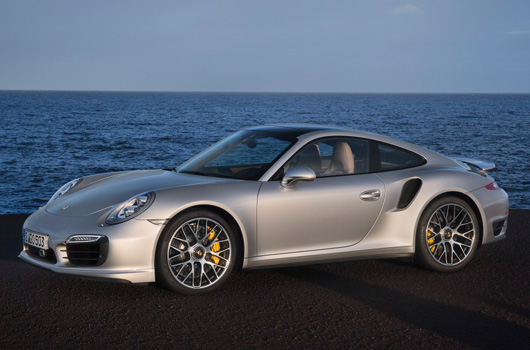
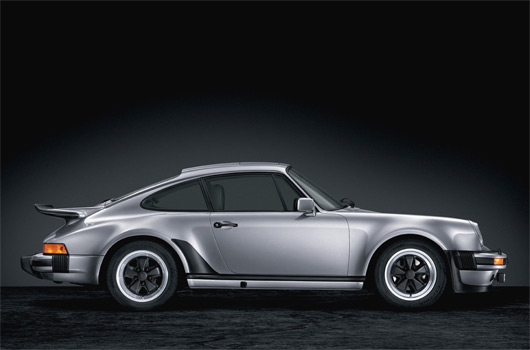
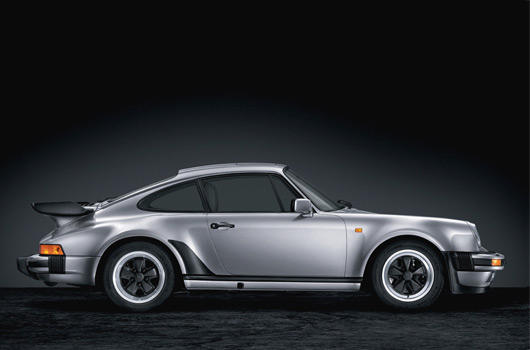
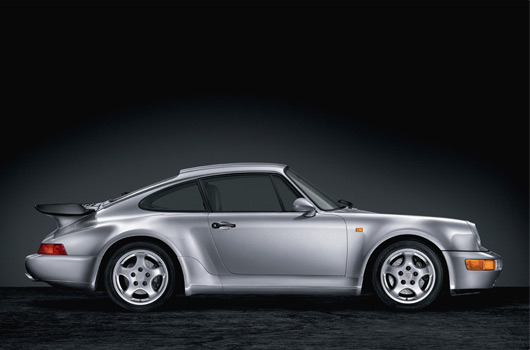
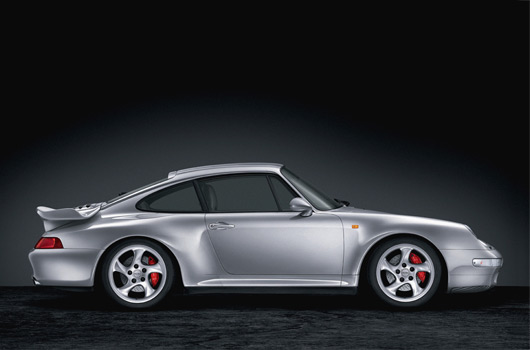
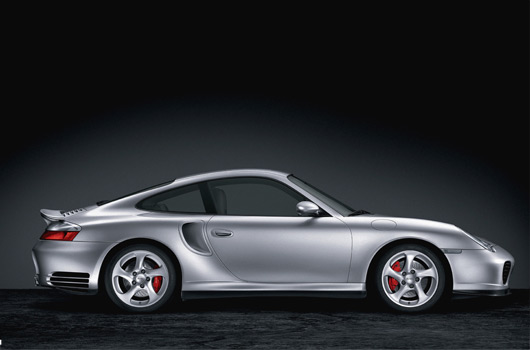
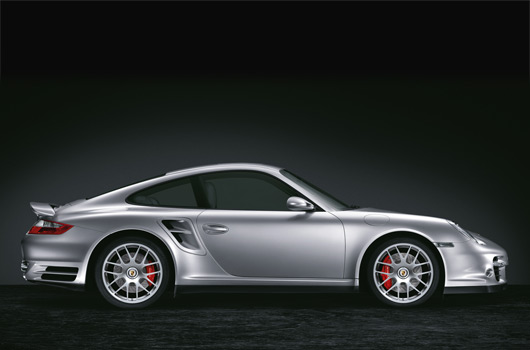
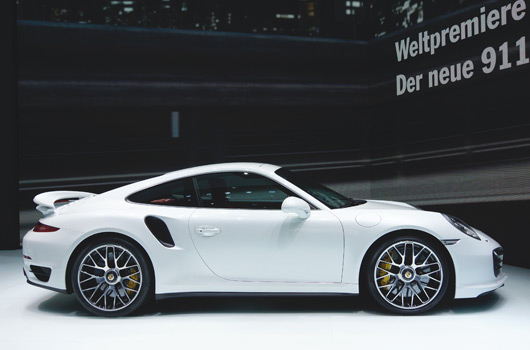
One reply on “A brief history of the Porsche 911 Turbo”
Awesome content. Learned a lot!